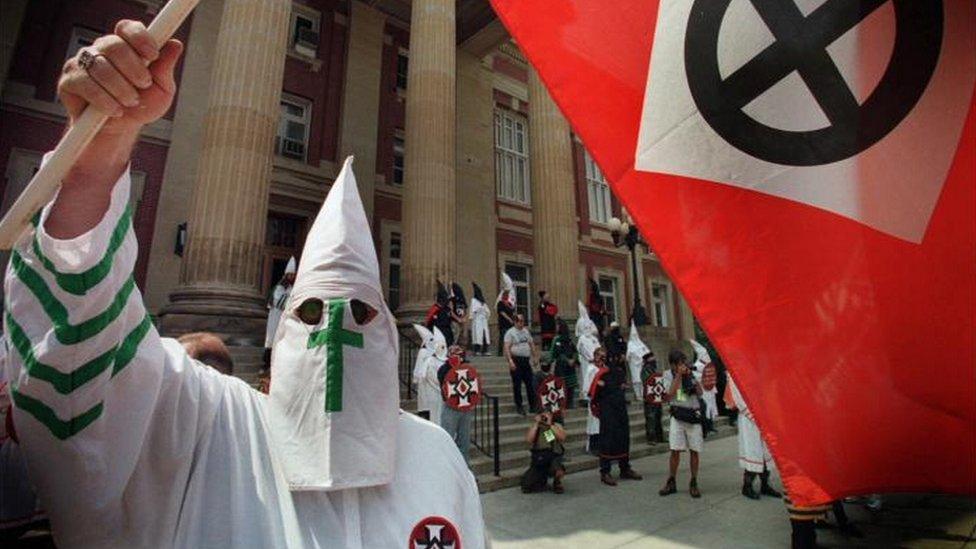Charlottesville: One killed in violence over US far-right rally
- Published
Footage captured the moment a car rammed into a crowd of counter-protesters in Charlottesville
One person has died and 19 others were injured when a car rammed a crowd of people opposing a far-right rally in the US state of Virginia, police say.
Earlier, street brawls erupted between white nationalists planning to attend the march and counter-protesters.
The mayor of Charlottesville, where the now-cancelled rally was taking place, said he was "heartbroken" at the death.
President Donald Trump has condemned the violence, and local officials have declared a state of emergency.
The car involved in the ramming incident was later located a few streets away and the driver is in custody, the city's police chief said.
In addition to those injured there, the Charlottesville Police Department said, external another 15 people were injured in other violence related to the far-right march.
Late in the afternoon, a Virginia State Police helicopter, crashed in woodland south-west of the city, killing two people; however, there has been no indication that this was related to the violence.
The "Unite the Right" march was called to protest against plans to remove a statue of a general who had fought for the pro-slavery Confederacy during the US Civil War.
'Car backed up and hit again'
Video posted on social media showed a car ploughing at speed into several slow-moving vehicles, which were surrounded by a densely packed crowd.
A witness said one girl got "tore up" after the car "backed up and hit again".
Officials said the driver had been taken into custody.
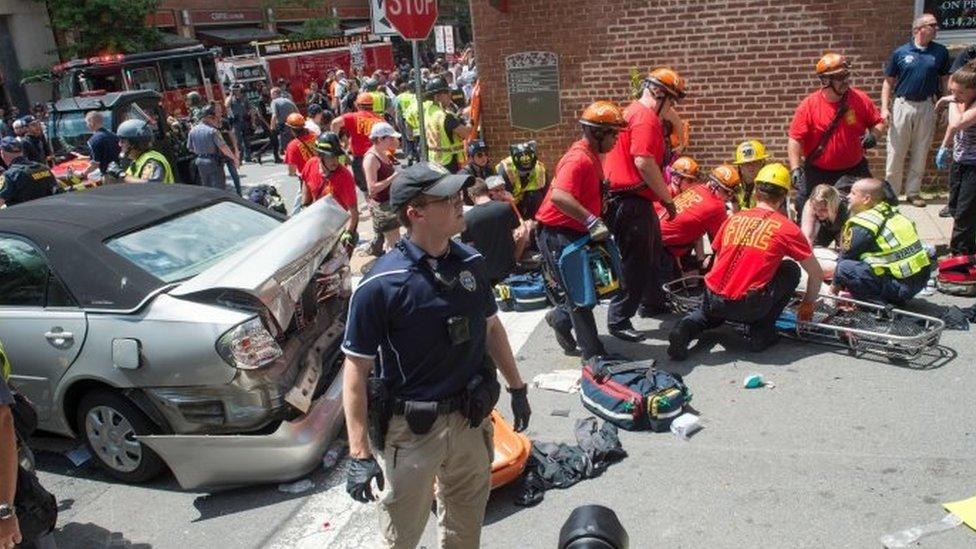
A number of people received first-aid after a vehicle drove into a crowd
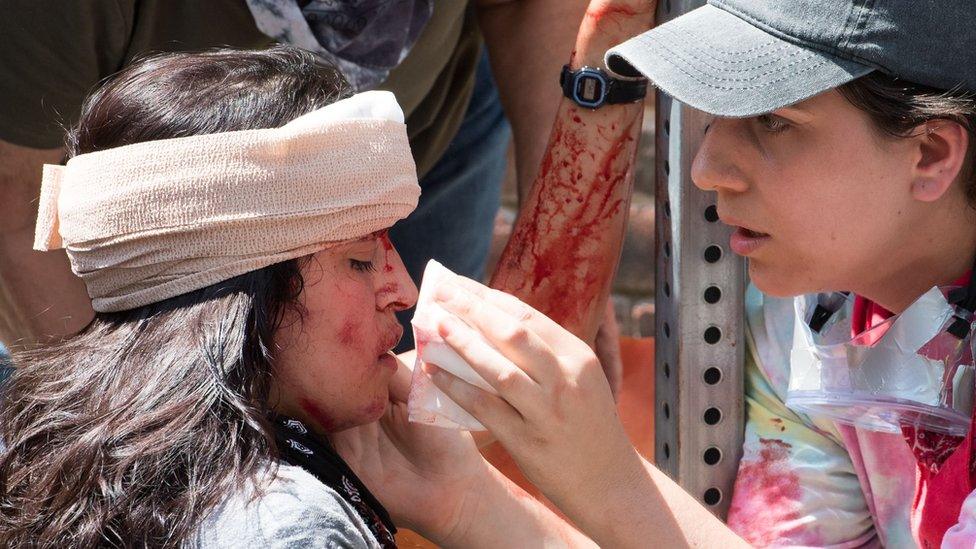
Witnesses said the car backed up and hit the crowd more than once
Police earlier fired tear gas against demonstrators and said that arrests had been made after a declaration of unlawful assembly at Emancipation Park.
The far-right protesters, some waving Confederate flags, carrying shields and wearing helmets, are angry about the planned removal of a statue of General Robert E Lee from Charlottesville.
The US president ignored questions over whether his response went far enough
Gen Lee commanded the pro-slavery Confederate forces in the US Civil War of 1861-65.
The New York Times reports that some of them were chanting "You will not replace us," and "Jew will not replace us."
Anti-racism organisations such as Black Lives Matter also held marches.
President Donald Trump condemned "in the strongest possible terms this egregious display of hatred, bigotry, and violence on many sides".
"The hate and the division must stop right now," he told reporters, speaking in New Jersey, where he is on a working holiday. "We have to come together as Americans with love for our nation."
Democrats and Republicans alike have taken issue with his choice of words, noting that he failed to refer to the role of white nationalists.
Republican Senator Cory Gardner tweeted: "Mr. President - we must call evil by its name. These were white supremacists and this was domestic terrorism."
Senator Orrin Hatch of Utah, also a Republican, felt similarly.
Allow X content?
This article contains content provided by X. We ask for your permission before anything is loaded, as they may be using cookies and other technologies. You may want to read X’s cookie policy, external and privacy policy, external before accepting. To view this content choose ‘accept and continue’.
Right-wing blogger Jason Kessler had called for a "pro-white" rally in Charlottesville, and white nationalists promoted the gathering widely.
Oren Segal, director of the Anti-Defamation League's Center on Extremism, said white power groups were present in Charlottesville - including neo-Nazis and factions of the Ku Klux Klan.
One picture tweeted by author J K Rowling, external showed a man on the street carrying a swastika flag.
The governor of Virginia, Terry McAuliffe, said his only message for the white supremacists who had rallied in the city was - "go home." Speaking to reporters in Charlottesville, he said there was no place for white supremacist groups there, or in America.

At the scene: Bottles thrown
By Joel Gunter, BBC News, Charlottesville
There were very violent scenes at Emancipation Park and it took some time for the police to intervene.
Both sides were throwing bottles and rocks and using pepper spray.
The far-right protesters were a mix of different groups with shields and batons and the declaration of a state of emergency seemed to have had a significant impact on them, as they started to dissipate.

Shiquan Rah, a 21-year-old demonstrator who had joined the counter-protest, said about the far-right groups: "These people don't have a message, their message is hate and violence. This is a spiritual war we're in.
The BBC's Joel Gunter describes the clashes, where groups were armed with shields and batons
Virginia Governor Terry McAuliffe urged calm tweeting, external: "The acts and rhetoric in #Charlottesville over past 24 hours are unacceptable [and] must stop. A right to speech is not a right to violence."
Charlottesville Mayor Mike Signer had earlier called, external the rally a "parade of hatred, bigotry, racism and intolerance".

US Civil War and alt-right links
1861-65 US Civil War between the northern and southern states was principally caused by slavery
Southern Confederate forces, which backed slavery, eventually surrendered to Union army and slavery was abolished
A number of cities have grappled with Confederate symbols that still exist today, with flags and monuments becoming key venues for alt-right groups in recent months
Supporters say Confederate symbols represent freedom and liberty, but opponents say their roots are in slavery
The alt-right is a disparate group of provocateurs who hate political correctness and love Donald Trump, but critics say they are bigoted white nationalists

On Friday, the white nationalists held lit torches - which some observers described as a reference to the Ku Klux Klan - and chanted "White lives matter" as they marched through the University of Virginia in the city.
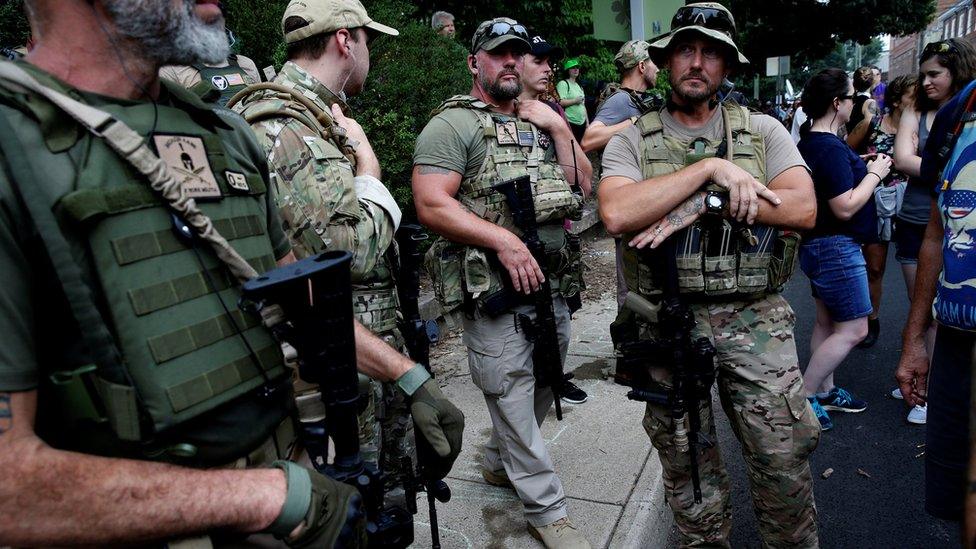
Members of a white nationalist group were armed and wearing militia uniforms
Charlottesville is considered a liberal college town - and 86% of the county voted for Hillary Clinton in last year's presidential elections.
However, the town has become a focal point for white nationalists after the city council voted to remove the statue of Gen Lee.
Some observers also argue that Mr Trump's election to the White House re-energised the far right across the US.
- Published12 August 2017

- Published13 August 2017
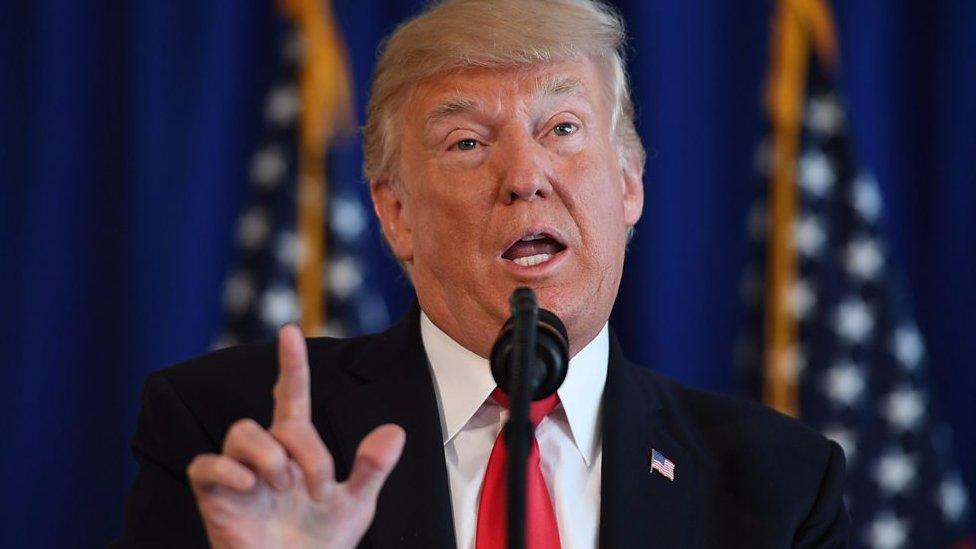
- Published12 August 2017
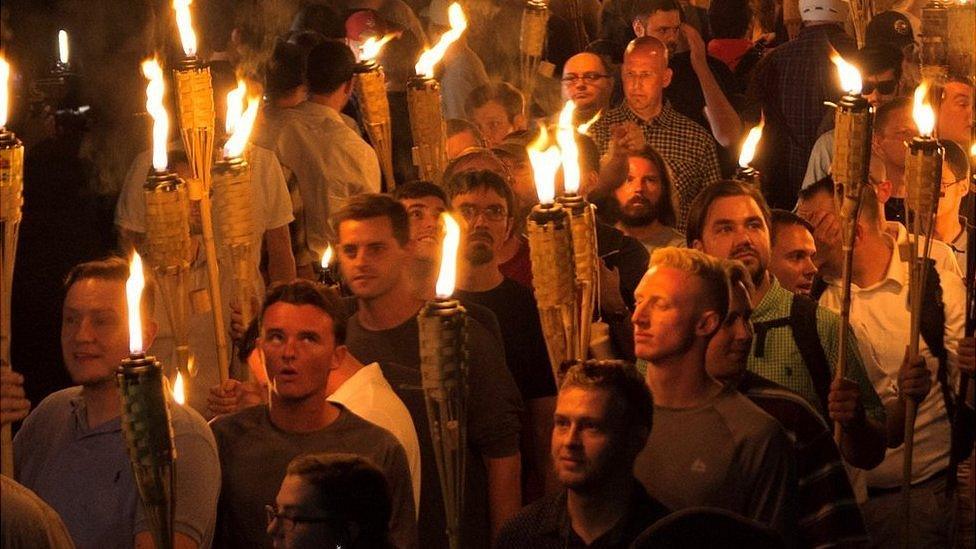
- Published9 July 2017
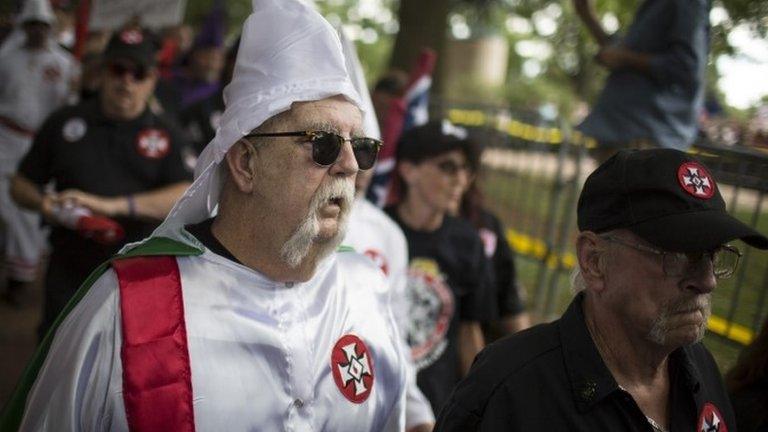
- Published9 July 2017

- Published15 May 2017
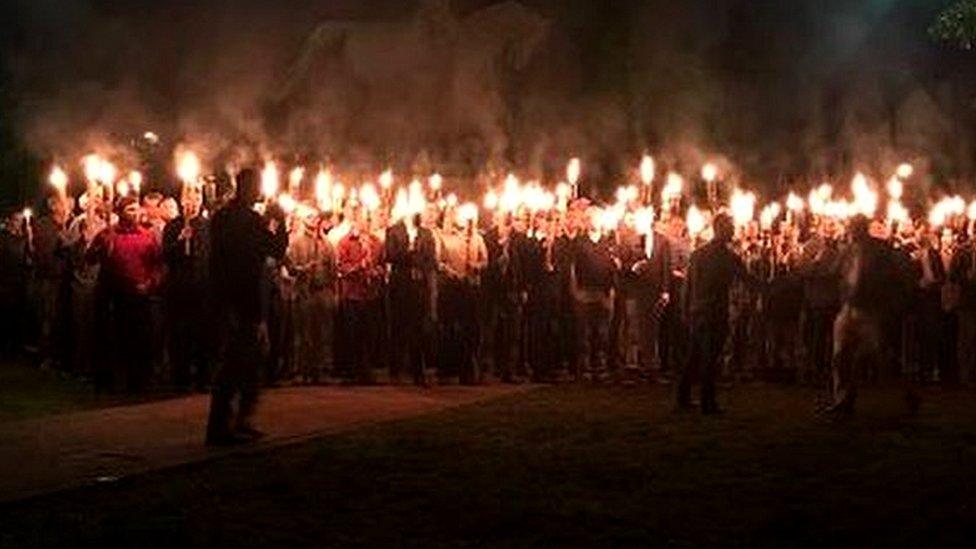
- Published20 December 2016
